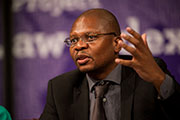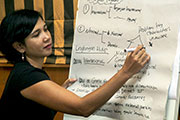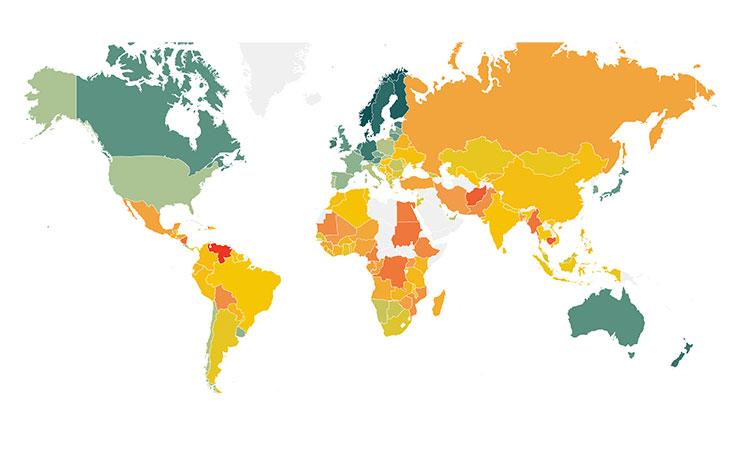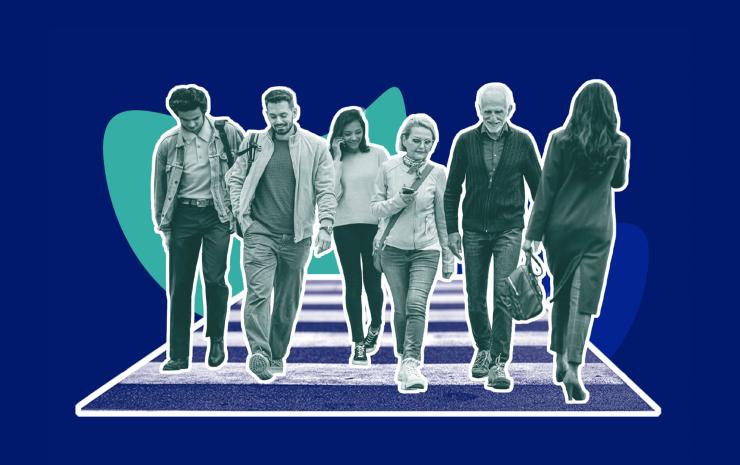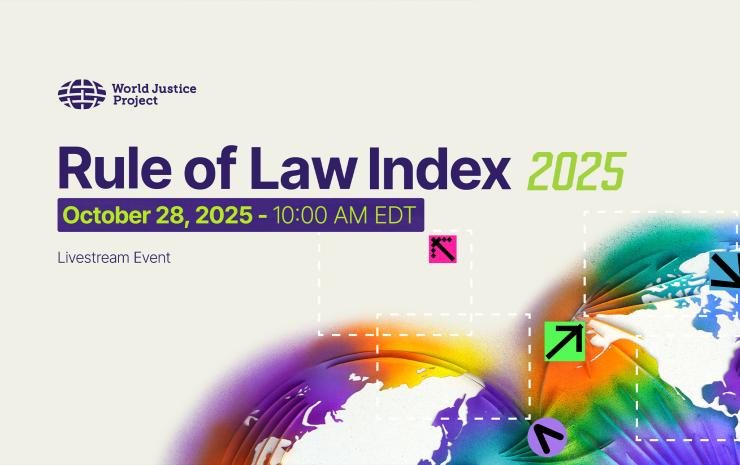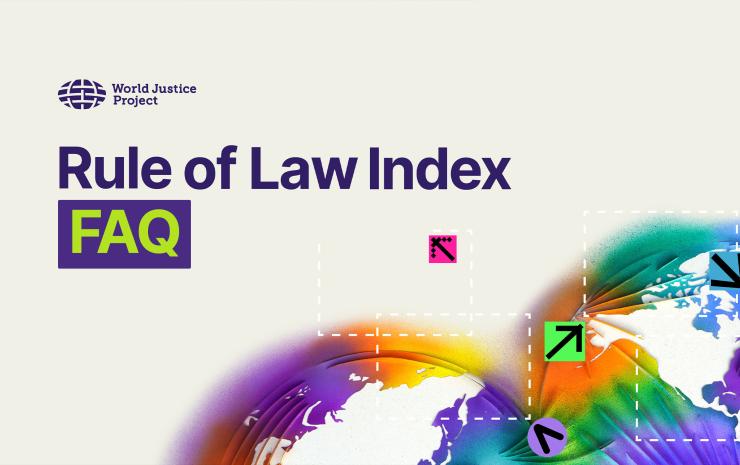
As we reflect on labor rights and workers during the month of May, pause and consider what the working world looks like to someone who cannot see, or hear, or move easily from place to place. Justice Rising contributor Stephanie Ortoleva was recently at the Pacific Rim International Conference on Disability and Diversity in Hawaii, where she delivered this excellent keynote on the obstacles facing women with disabilities in both education and employment as they enter the STEM fields.
Women and Technology
In the 1950s, technology was proclaimed as the source for the liberation of women, "freeing" us from housework if we bought the latest new-fangled washing machine or vacuum cleaner. Well, most of us women know how that worked out - or didn't! "Advances" in technology have changed the details of housework without really lessening the labor. While women may have escaped the stigma of being tied exclusively to the home with no options for a career, housework remains an un-appreciated, stigmatized activity, un-quantified and un-paid in an industrial society that supposedly calculates the cost of labor, at least for some. Thus women have a double shift, the first shift, work outside of the home for wages and then the second shift, work in the home for no pay at all. In the household, where the technology is assumed to be doing the work not the woman herself, often the only time the woman’s handiwork is noticed is when some task has been neglected or not completed to “perfection.†See, Eleanor Hayes McConnell, "More Work for Mother: The Ironies of Household Technology."
Disability and Technology
Now technology is touted as a source of liberation for persons with disabilities. How is it working out for us? A mixed bag. Technology offers the potential to greatly facilitate accomplishment of the mundane activities of daily life that some people with disabilities may find difficult to perform independently, with implications for how we see ourselves and our identity and how we interact with others. These technologies may offer some people with disabilities the possibility of entry and participation into previously inaccessible activities and domains.
However, technology also may have negative meanings and implications. Among some members of the Deaf community, for example, there is opposition to using such technologies as cochlear implants. Thus, technology may represent an "artificial' invader" of the body and a disruptor of the deaf community sub-culture, forced upon us by those who see deafness as a "problem" and "abnormal" and a "defect". This perpetuates the notion of persons with disabilities being seen as needing "correction" or "fixing" and this approach can be described as the "deficit model of technological aid." See, Deborah Lupton and Wendy Seymour, Technology, selfhood and physical disability.
Gender, disability and Technology
Similarly, mass media perpetuates sexist concepts of "beauty" generally seeing women's bodies as needing "fixing" and "improvement" that the mostly male-dominated media, fashion and beauty industries perpetuate. Such notions place women and girls with disabilities in a double bind as women and as women with disabilities, always needing "fixing" to conform to some external standard or definition of self.
Technologies that underline our status as "disabled" may be seen as singling us out as "deviant bodies," even though such technologies may assist us in performing some important tasks, making it more difficult for us to "pass" as non-disabled, society's definition of "normal." For example, some women with disabilities may view internet technology as enabling us to interact with others through a medium that potentially conceals our difference, maintaining our right to non-disclosure rather than denying the existence of our disability.
Of course, it is undeniable that access to information communications technology (ICT) including computers, mobile devices, social media and websites is becoming increasingly vital for participation in society. But in some developing countries, internet access is unreliable, intermittent or completely unavailable. Further, because of economic disadvantage we are less likely to have access to ICT which, in turn, means we are less likely to overcome socioeconomic barriers to our well-being and the well-being of our families. With respect to ICT, there is a misguided notion that women with disabilities are less capable of operating computers and this perpetuates a vicious cycle of disadvantage: the perception of women being generally less capable with ICT tends to make women with disabilities reluctant to make a start with new technology. Some women with disabilities hold the perception that ICT is not relevant to us and we may need encouragement to see the personal benefits of technology access, and that the potential benefits are worth the frustration and effort needed to learn and engage with ICTs.
Perhaps if we were designing the technologies which could assist us in our everyday lives, those technologies would be more user-friendly, more of an expression of ourselves as we wish to present ourselves and more as a mechanism we choose rather than something imposed to "fix" us.
But as this science, technology engineering and math revolution moves forward at an astoundingly fast pace, most women and girls are not educated nor employed in the field and this situation is even worse for women and girls with disabilities who are forgotten and left behind. And perhaps as important as including women and girls with disabilities in the STEM fields is for each of us individually, it is equally important for the community at large. Can we afford to lose a brilliant scientist who could create a new energy technology? Or the technologist who will design an easy-to-use, affordable accessible computer program or application? Or the engineer who will find the affordable solution to water pollution? Or the mathematician who could derive equations to help us understand how things work?
Statistics, Skills, and Knowledge
According to the World Bank and World Health Organization 2011 Report on Disability, there are approximately One Billion persons with disabilities worldwide, 15 percent of the global population, but there are significant differences in the prevalence of disability (defined as "significant difficulties in their everyday lives") between men and women in both developing and more developed countries: male disability prevalence rate is 12% and female disability prevalence rate is 19.2%. Women with disabilities are recognized to be doubly disadvantaged, experiencing exclusion from the rest of society due to both our gender and our disability, what is called intersectional discrimination based on multiple identities.
Education in these STEM fields is essential for us personally as women with disabilities. Girls with disabilities have the lowest education participation rates of all groups as compared with men with and without disabilities and women in general and knowledge of science, technology, engineering, and mathematics subjects is especially deficient. As a result of these education deficits, along with discrimination and stereotyping, women with disabilities have low employment rates, as compared with men with and without disabilities and women without disabilities.
Importance? These skills and knowledge could provide significant employment opportunities for women and girls with disabilities. Additionally, because of the important role that knowledge of mathematics, science and technology plays in everyday life, skills in these fields could create dramatic improvement in the daily lives and independence of women and girls with disabilities. Proficiency in negotiating at the market, managing daily finances and utilizing cell phones and other internet communication technologies would enhance independence, family economics and self-reliance. The information technology revolution provides access to information for daily life and work and also is a mechanism for communication and collaboration among women with disabilities, and similar communications and collaborations between women with disabilities and women's rights activists. Additionally, such skills have also been shown to reduce the incidence of sexual and gender-based violence experienced by women with disabilities. These skills and knowledge could provide significant employment opportunities for women and girls with disabilities, affording the opportunity to pursue further education and future employment in these fields by participating in microfinance programs and other money-generating pursuits.
International Law
Under international law our participation is our human right. The United Nations Convention on the Rights of Persons with Disabilities (CRPD) in its Article 9 on accessibility stresses among other things that States should take appropriate measures to ensure persons with disabilities have access to information and communication technologies as well as other aspects of society. Additionally, Articles 24 and 27 on education and on work and employment, respectively, ensure the right of women and girls with disabilities to education and employment in the STEM fields. And of course, CRPD Article 6 focuses specifically on women and girls with disabilities and the CRPD Committee intends to draft a General Recommendation on Women and girls with disabilities. The United Nations Convention on the Elimination of All Forms of Discrimination Against Women (CEDAW) in its Articles 10 and 11, respectively, guarantee to all women and girls the right to education and the right to work. Furthermore, in several of its General Recommendations, the CEDAW Committee has specifically addressed the rights of women and girls with disabilities and the Final Conclusions from the 55th Session of the UN Commission on the Status of Women, which focused on women and education and employment in the STEM fields, specifically incorporated this right for women and girls with disabilities. Thus, the synergy between the CRPD and the CEDAW is a vital tool for advancing our rights in this area.
Barriers
Barriers to the participation of women and girls with disabilities in education and employment in the STEM fields are based on culture, family structures, societal attitudes and stereotypes, institutional systems, law and legal processes, economic realities, patriarchy and paternalism. Specific issues are discussed below.
- Cultural bias - Often, women are denied education because it is believed that they will become wives and mothers and such resources are provided to male children. But for women with disabilities, are often seen as unlikely to assume such roles, and thus are the last to receive family resources.
- Double discrimination - Women and girls with disabilities face double or intersectional discrimination based on both gender and disability (as well as other identities) and stereotypical attitudes based thereon further limit our opportunities.
- Invisibility - Girls with disabilities are often kept in the home and their births may not be registered, making them invisible to the education system, either because of assumptions about our abilities or embarrassment on the part of our families. Additionally, misconceptions about our abilities may make us invisible to teachers even if we attend school.
- Discriminatory, paternalistic and over-protective laws - In several nations there are laws that explicitly discriminate against women, and more specifically women with disabilities, especially through paternalistic and over-protective provisions, creating, perpetuating and re-enforcing stereotypes.
- Violence against women and girls with disabilities - Women and girls with disabilities are more likely to experience gender-based violence than their non-disabled sisters, sometimes because we are erroneously perceived as sick, helpless, asexual, and powerless, or on the other hand, we are seen as hypersexual or just lucky to have sexual experiences at all wherever we can because we are undesirable. Additionally, women and girls with disabilities living in residential facilities or schools are even more likely to experience such abuse.
- Pregnancy, HIV-infection and other results of sexual assault and rape - As a result of sexual violence and rape, women and girls with disabilities may become pregnant or contract sexually transmitted diseases from the abuser.
- Bullying and teasing - Disabled girls are sometimes subjected to bullying and teasing by their peers based on both our gender and our disability, negatively impacting our emotional and cognitive development, as well as causing low self esteem
- Economic resources for Education - Male education is prioritized as it is believed that a male child can contribute financially to the family, and women and girls with disabilities are not viewed as worthy of an education since many assume their disabilities will preclude success.
- Schools in inaccessible locations and/or lack of transportation - Schools that provide special education and/or education for children with disabilities in integrated settings are often located in cities and families are reluctant to send daughters to the city or there is no accessible transport to such schools. Boys are often seen as more independent and permitted to travel to urban locations.
- Access to assistive technology and rehabilitation - Men and boys have greater access to such services.
- Accessibility of school facilities - Often the school buildings and facilities themselves are inaccessible, posing yet another barrier.
- Accessible toileting facilities and assistance in toileting - Provision of toileting assistance places a particular burden on women and girls with disabilities, especially with respect to menstruation which is often a taboo topic and access to appropriate hygiene products is non-existent or in very short supply resulting in increased isolation for women and girls with disabilities and further impairs their ability to attend school or work.
- Availability of special education - Girls with disabilities are less likely to receive special education, in some instances because teachers expect more from boys than girls and sometimes because girls, who may be less likely to act out due to cultural control pressures, are not referred for services based on a learning or other disability. And even if a girl receives special education services she may be tracked toward pursuing traditional gender-identified career paths.
- Competitive classroom climate and teaching strategies - Competitive educational approaches are challenging to some girls with disabilities. Mainly for the same reasons discussed earlier, like bullying, being outnumbered by males in the classroom, and low self-esteem. In addition, many teachers are trained to teach more life skills to students with disabilities rather than focus on competitive subjects.
- Digital divide - Women and girls with disabilities are at the bottom of the digital divide and the least likely to have access to technology.
- Belief that girls do not do math and science - We are presumed not to have aptitude in these subjects and are steered into gender stereotypical subjects, as well as the "talent myth" which is based on the erroneous assumption that skills in STEM fields are an innate aptitude and cannot be learned.
- Counselling based on stereotypical roles for women and girls - Counsellors often steer girls with disabilities toward gender-stereotyped jobs and generally they are less likely to afford girls with disabilities vocational education and many counsellors hold the incorrect societal perception that girls with disabilities have limited aptitude or interest in STEM and other challenging subjects.
- Girls with and without disabilities have limited interaction - Both groups would benefit from such interactions, as they contribute to networking and peer support, and reduction of fear and stigma.
- Absence of women with disabilities as role models - The invisibility of women with disabilities in educational materials, as educators, in the workplace and in the media creates a dearth of positive role models for women and girls with disabilities.
- Shortage of women with disabilities as mentors - Having a responsive and supportive mentor makes the world of difference for academic and professional success and increased self-esteem.
- The medical model of disability versus the social model of disability - The medical model of disability evokes pity and views disabilities as a tragedy which requires the individual to be 'fixed" or "rehabilitated." The social model of disability, as enumerated in the CRPD, asserts that society should instead modify and lower the external barriers that create unnecessary obstacles for disabled individuals.
I hope I have inspired all of us to consider creative and innovative approaches to knock down these barriers. As I did my research on this subject, I was disappointed to find that worldwide there are very few programs to encourage and support women and girls with disabilities in education and employment in the STEM fields. Will you help us to create one in your community For more information, see Stephanie Ortoleva's chapter on this subject in the forthcoming book: Asha Hans, Editor, "Women and Girls with Disabilities - “ Global Perspectives," Sage Publications, 2014 (ordering information will be on the Women enabled, Inc. website in the Reading and Listening room.), Also see the Women Enabled, Inc. website in the 'Education and Employment in Science, Technology, engineering and Math' section.
